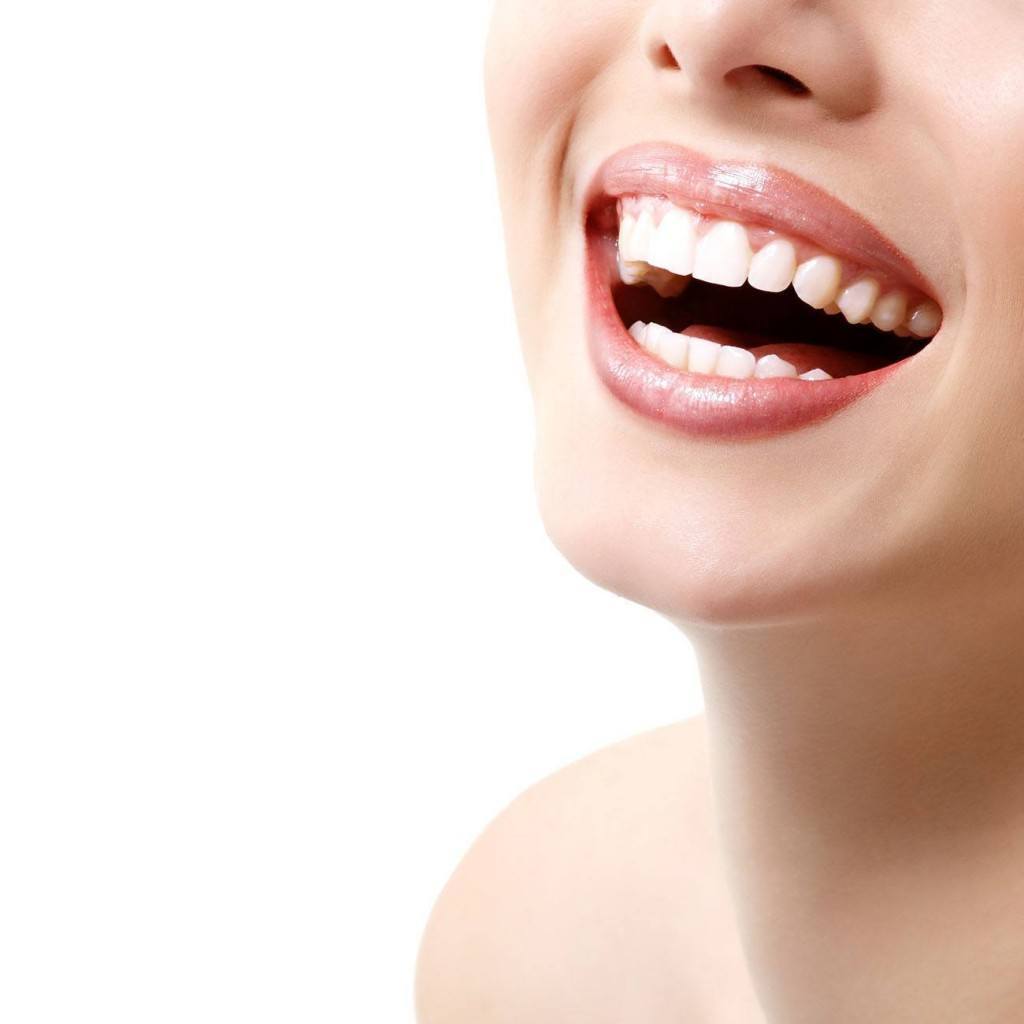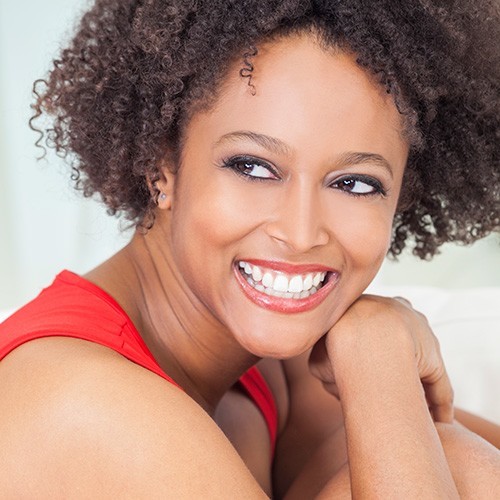- info@porcelainveneers.ca
- (416) 597-6453
- 700 University Avenue (College St. Entrance), Toronto, Ontario, M5G 1Z5
As mentioned above, there are millions of different smiles – essentially as many as there are individuals – three basic smile patterns have been identified.
Plastic surgeons given the task of rehabilitating smiles have identified three neuromuscular smile patterns:

The commissure smiles is the most common pattern, seen in approximately 67% of the population. In this smile, typically thought of as a Cupid’s bow, the corners of the mouth are first pulled up and outward, followed by the levators (muscles) of the upper lip contracting to show the upper teeth. The lowest incisal edge of the maxillary (upper) teeth are the central incisors. From this point, the convexity continues superiorly with the maxillary first molar being 1 to 3 mm higher than the incisal edge of the centrals.
A spontaneous commissure smile results in a maximum of movement of the commissure from 7 to 22 mm. Likewise, the average direction of movement of the commissure is 40 degrees from the horizontal (range 24 to 38 degrees).
For personalities with recognizable commissure smiles, think of Sienna Miller, Paris Hilton, Drew Barrymore, and Jennifer Lopez.

Trustindex verifies that the original source of the review is Google. Last week I had 18 porcelain veneers done by Dr. Philips (12 on top, 6 on the bottom) and I am beyond thrilled with my new smile! I did have 10 on top done by Dr. Philips almost 8 years ago and I now wanted a 'whiter' smile and abit longer front teeth. Of course I would never consider going anywhere else because Dr. Philips is THE BEST at what he does! I get stopped even more often now with compliments about my beautiful smile! From the initial consultation (yes, although I was a previous patient, he takes the time to analyze and hear my current concerns and wants) to the temporaries and final veneers the entire process exceeded my expectations AGAIN! He was so patient and explained everything so clearly and never got frustrated by all of my questions.(he even met with me at his dental laboratory to get the right color of my new veneers). I am taking the time to write this review because I referred my friend and upon her doing her own research she asked me about the latest review. I was beyond shocked when I read it! Crazy how people can write anything they want but the business can’t respond honestly to protect the clients privacy. All I can say is that my several experiences/appointments at the Studio are the opposite of what that person wrote. I can appreciate that Dr. Philips doesn’t have a lot of ‘google reviews’ because he is not a general dental office and certainly DESERVES to have many many more! I would drive the 2 hours to go to his Studio for all of my dental needs but his specialty is solely Smile Makeovers and he is THE BEST Cosmetic Dentist ever! Yes, that is my new smile and new profile pic! Love it!Trustindex verifies that the original source of the review is Google. I think I must be Dr. Philips' most challenging patient! Whatever the problem, the result is always excellent! You and your team are truly outstanding!! Thank you, PamelaTrustindex verifies that the original source of the review is Google. very professional and very careful and accurate with the procedures.Trustindex verifies that the original source of the review is Google. The team is outstanding and you are in good hands with Dr. Philips!Trustindex verifies that the original source of the review is Google. Excellent service! I love my perfect smile! Thank you Dr. Philips! 😊Trustindex verifies that the original source of the review is Google. Dr.Ed Phillips is patient and kind. He is an expert in his field. He explained to me the precise root cause of my problem regarding to my oral health (no other previous Dentist in my experience was able to do so). I trust my future smile to Dr. Philips and the whole team of "The Studio for Aesthetic Dentistry". ...Three month later... Dr. Ed Philips is a true Master of Dentistry, the Artist and the Scientist. He made an impeccable design for me.He didn't stop then,he wanted a perfection.He made the second design for my teeth and it was PERFECT. Now I am one happy and confident woman winning people over with my radiant smile!
The cuspid smile is found in approximately 31% of the population. In this smile, the shape of the lips is commonly visualized as a diamond. Cuspid smile pattern is identified by the dominance of the levator labii superioris. They contract first, exposing the cuspid teeth. Then the corners of the mouth contract secondarily to pull the lips upward and outward. The corners do not move as much as they do in the commissure smile. The corners of the mouth are often inferior to the height of the lip above the maxillary cuspids.
Often, in this smile pattern, there is a similar inferior turn of the maxillary premolars as opposed to the continuous convexity of a commissure smile, this “gull wing” effect is silhouetted by the gingival tissues, which correspondingly mimic the shape of the upper lip.
In cuspid smiles the maxillary morals are often at or below the incisal edge of the central incisors. Celebrities with this pattern include Eva Longoria, Angelina Jolie, Tom Cruise, and Jennifer Aniston.


The complex smiles is found in only about 2% of the population. Both upper and lower lip are actively pulled during smiling. The levators of the upper lip, the levators of the corners of the mouth, and the depressors of the lower lip contract simultaneously, showing all of the upper and lower teeth concurrently.
The key characteristics of this smile is the strong muscular pull and retraction of the lower lip downward and back. In this pattern, both maxillary and mandibular occlusal planes are generally parallel, like two chevrons.
For celebrated personalities with complex smiles, consider Julia Roberts, Oprah Winfrey, Cameron Diaz, and Britney Spears.
It is important to realize that a smile moves. It animates. It’s not like a cavity, which is static and does not change before the dentists eye (let’s hope not, anyway). Gum disease stays the same, regardless of whether the person is talking or not talking.
A smile is dynamic. You can’t look at patients with their lips closed and predict what they are going to look like when they smile. So when we are analyzing smiles, we have to look at four parts of the smile cycle:
(I) The look when the patient’s lips are together.
(II) The look when their lips are slightly parted – and how much tooth is showing.
(III) The look when it’s what we would call a normal smile – the three-quarters smile, the not quite full smile people use when being photographed.
(IV) The look when the smile is exaggerated and wide, when someone is laughing wholeheartedly.
These four stages are therefore termed:

Lips closed

Resting display

Natural smile (three- quarters)

Expanded smile (full)
Cosmetic Dentists can use these stages to describe what the smile would look like at various points in the smile cycle. What matters is not just that smile once it has been achieved, but the whole progression of the smile, from the closed, resting stage to the fully expanded stage. I call this animation.
Of course, smiles vary and are unique to each individual. Many smiles do not differ much from a natural smile to an expanded smile. In these cases, treatment can often be restricted to the maxillary or mandibular anterior front six teeth. Other smiles differ greatly between these two stages, in which case the treatment plan to aesthetically improve the smile must be extended to a greater number of teeth.